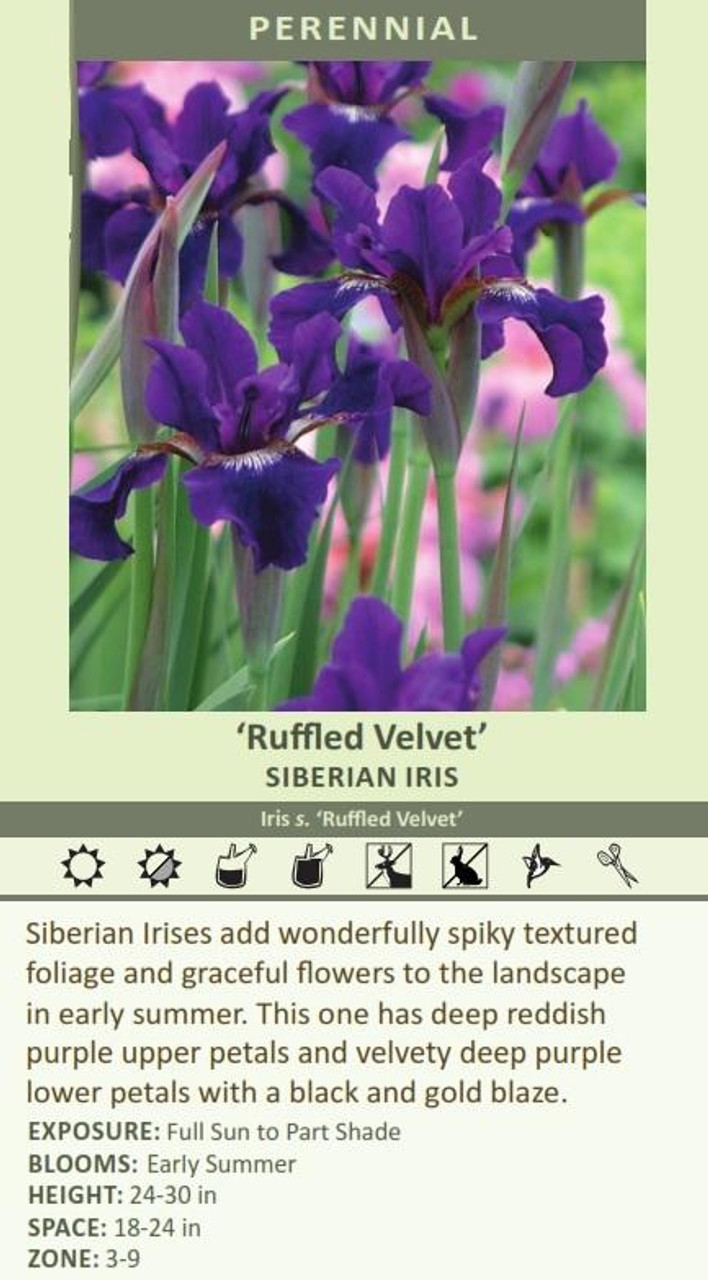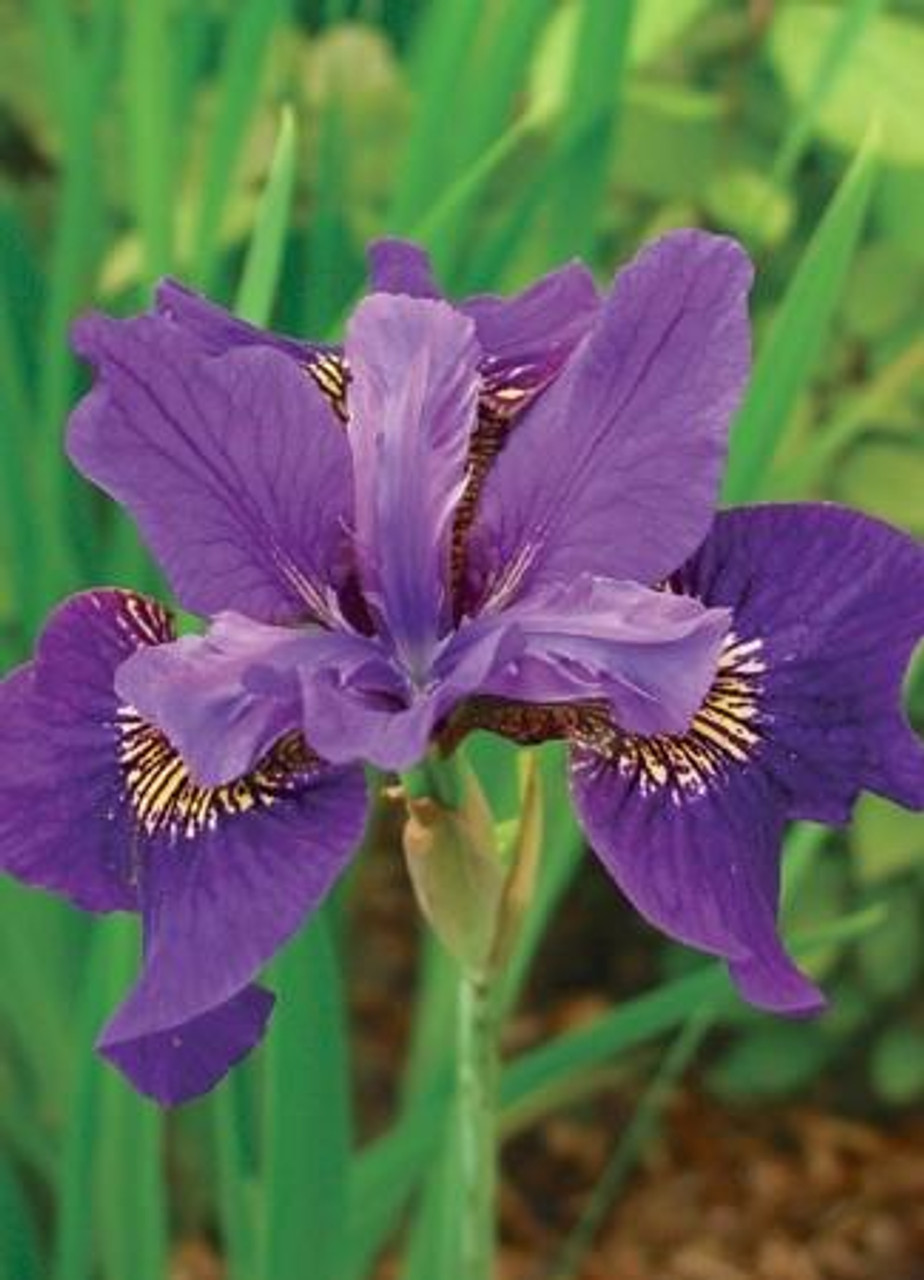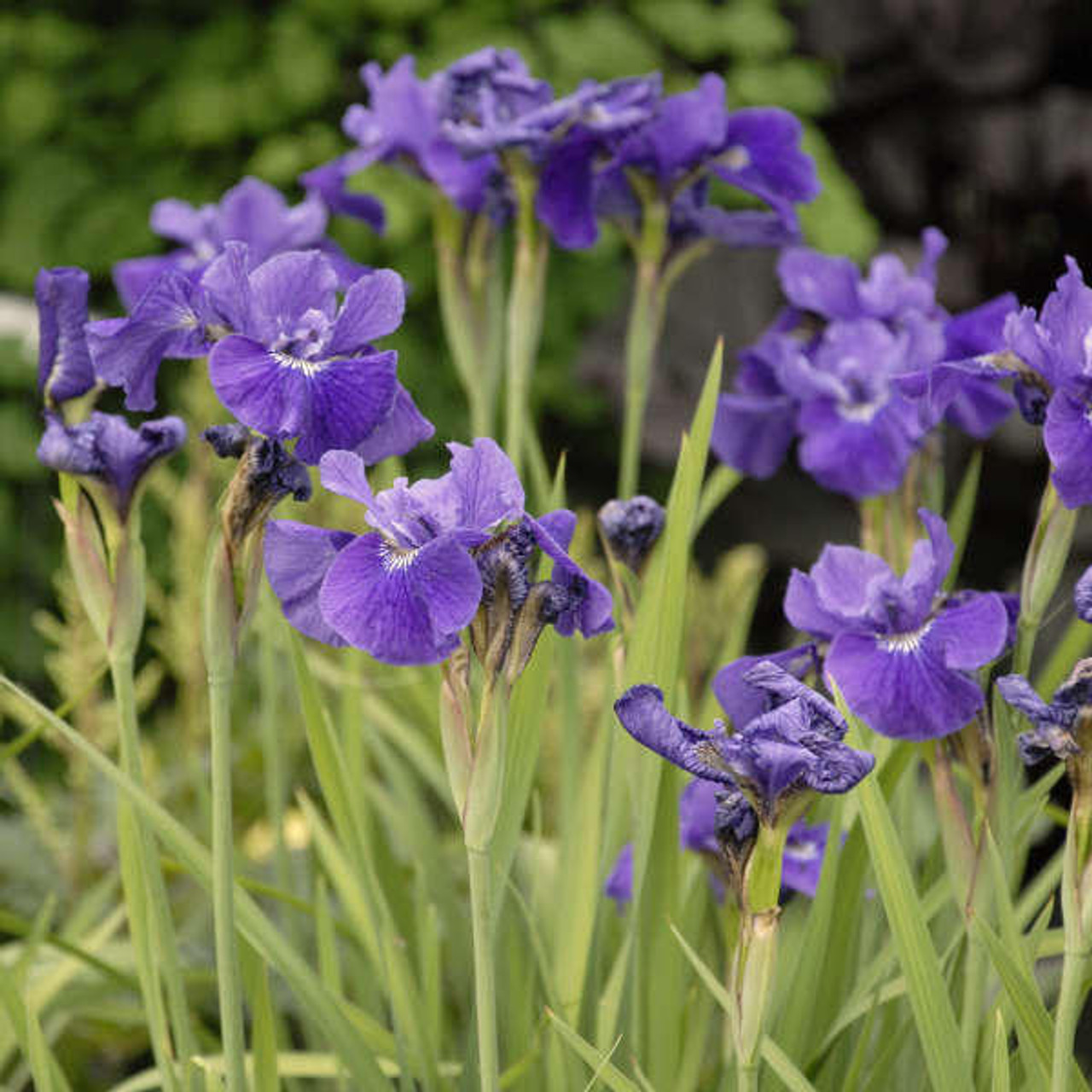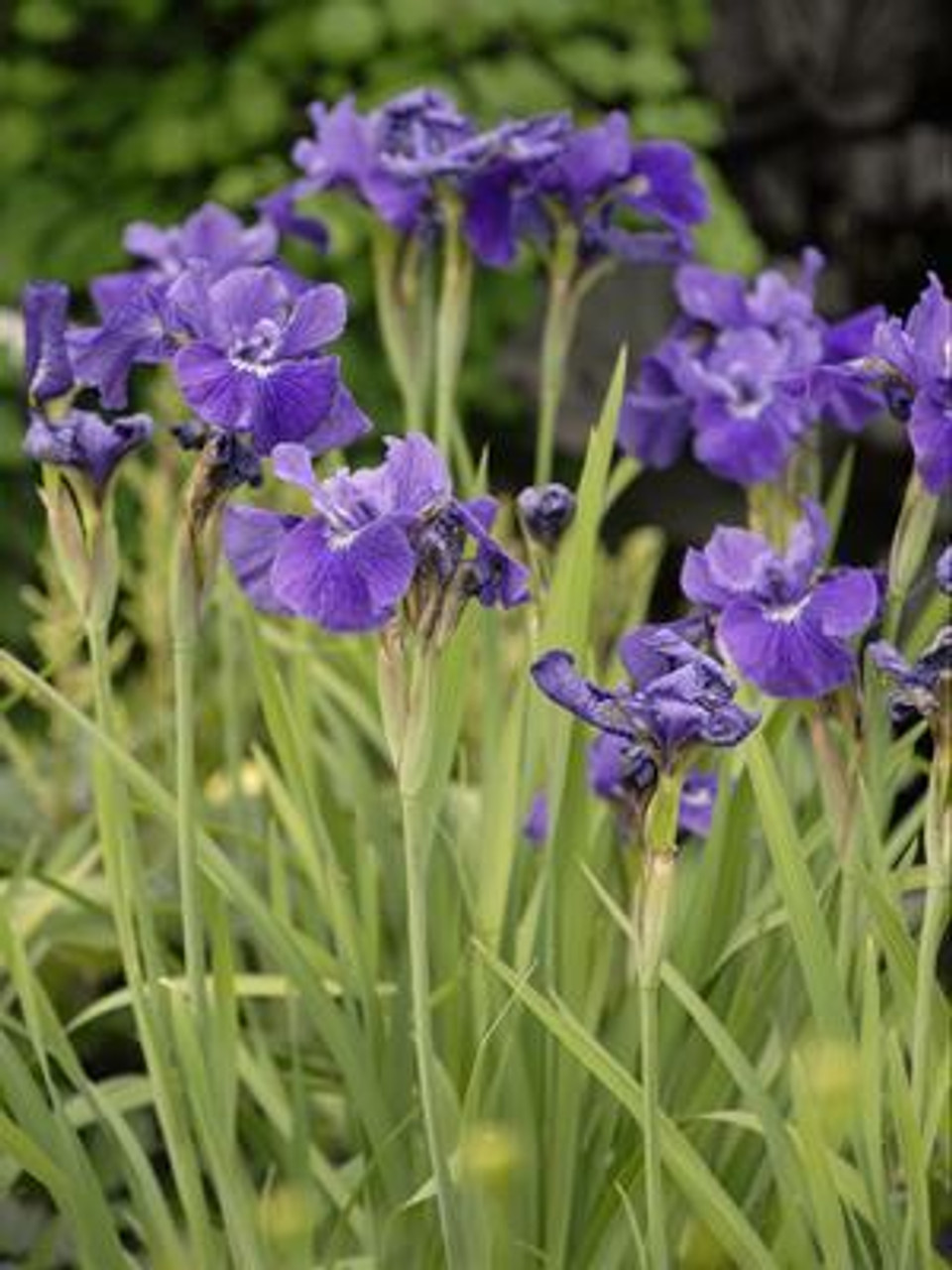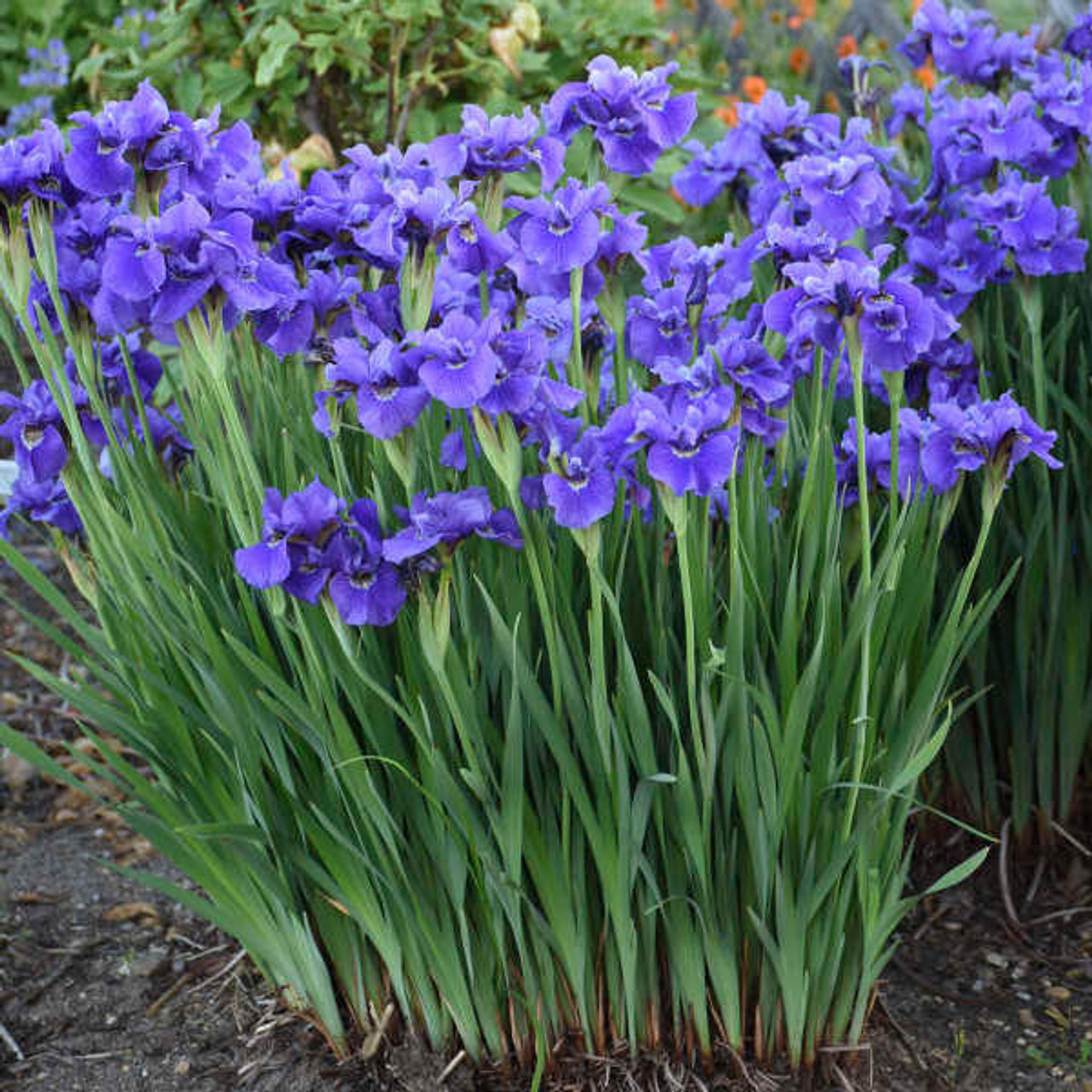Product Description
Iris sibirica 'Ruffled Velvet' (25) Bare Root Plants
Common name: Siberian Iris.
Red-purple standards, darker purple, velvety falls, and a black and gold blaze, blooms in early summer.
Siberian irises are haled for their elegant, delicate flowers and disease resistance. They perform admirably in the sunny to partially shady garden, but need plenty of water throughout the season to continue looking their best. In naturalized settings, they are particularly effective around water features. They can also be grown under Black Walnut trees since they are not effected by juglone. Siberian Irises bloom before Japanese Irises but after Tall Bearded Irises.
Siberian Irises are among the easiest and most trouble-free species to grow in their genus. They prefer full sun, though they will tolerate part shade especially in warmer zones. Plant in rich, moist soil that is moderately acidic (5.2-6.4). Deadheading this variety will not prolong its bloom.
It is best to leave these irises untouched until there is a notable lessening of blooms. At that time, they may be divided, preferably in the fall but also in the spring. New clumps may take two or three years to become firmly established, at which time they will begin to bloom profusely. Siberian Irises are the best species of Iris for the south.
Royal Horticultural Society's Award of Garden Merit
Height: 24.0-30.0 Inches
Spread: 18.0-24.0 Inches
Hardiness Zones: 3,4,5,6,7,8,9
Flower Color: Purple-red shades
Foliage Color: Green shades
Full Sun (> 6 hrs. Direct Sun) - Part Shade (4-6 hrs. Direct Sun)
Average to Consistent Water Needs
Average Soil Quality
Bloomtime: Early Summer
Attracts Hummingbirds
Bee Friendly
Deer and Rabbit Resistant
Growth Rate: Medium
Border Plant, Cut Flower, Mass Planting, Specimen, Focal Point
Iris sibirica 'Ruffled Velvet' is a truly exquisite Siberian iris cultivar that captivates with its rich, velvety flowers and ruffled petals. It is a vigorous grower and a reliable bloomer, making it a favorite among gardeners seeking a touch of elegance and drama in their landscapes. Here is a closer look at its captivating features:
Appearance:
- Deep Purple Flowers with Ruffled Petals: 'Ruffled Velvet' produces stunning, deep reddish-purple flowers with a velvety texture. The standards (upright petals) are a lighter amethyst color, while the falls (lower petals) are a deeper purple and adorned with delicate yellow veining at the base. The petals have a distinctive ruffling, adding to the flower's elegance and charm.
- Abundant Blooms: Each sturdy flower stalk produces many dainty blossoms, creating a beautiful display in late spring to early summer.
- Grass-like Foliage: The flowers rise above clumps of upright, gray-green, grass-like foliage that adds vertical interest and texture to the garden.
Growing Conditions:
- Sunlight: Thrives in full sun to partial shade. It prefers full sun but can tolerate some shade, especially in hot summer climates.
- Moisture: This iris prefers moist, fertile, well-drained soil. It is adaptable to a wide range of soils, but slightly acidic soil is ideal.
- Hardiness Zones: Suitable for USDA hardiness zones 3-8, making it a versatile choice for a wide range of climates.
Care:
- Low Maintenance: 'Ruffled Velvet' is a relatively low-maintenance plant.
- Watering: Keep the soil consistently moist, especially during dry periods.
- Dividing: Divide clumps every few years in late summer or early fall to maintain vigor.
Uses:
- Borders: Adds a vertical element and vibrant color to borders and beds.
- Water Features: Its tolerance for moist soils makes it a good choice for planting near streams or ponds.
- Naturalizing: Its vigorous growth makes it suitable for naturalizing in moist meadows or along pond edges.
- Cut Flowers: The elegant flowers make excellent cut flowers for arrangements.
Additional Information:
- Vigorous Growth: 'Ruffled Velvet' is known for its vigorous growth and ability to spread quickly in moist conditions.
- Cold Hardy: It is surprisingly cold hardy, tolerating temperatures down to -40°F (-40°C).
- Award Winner: It is a recipient of the prestigious Award of Garden Merit from the Royal Horticultural Society and the Morgan Award, the highest award reserved exclusively for Siberian Irises within the American Iris Society.
If you are looking for a beautiful and reliable iris with stunning, ruffled, deep purple flowers, Iris sibirica 'Ruffled Velvet' is an excellent choice. It is a captivating addition to any garden, adding a touch of elegance and drama.
Other Details
The most important part of the plant is its root system. Healthy roots are the foundation of a healthy, vibrant plant. The type of plug container used is based on the specific needs of the plants. Perennials offered as bare root traditionally perform better when planted as bare root.Planted in a specialized mix, potted plants have well established root systems. Top growth stage will vary depending on the current life cycle and time of year when shipped. In Winter and early Spring dormant plants may be shipped. Dormant plants may be planted right away, even before the last frost date.
Most bare root varieties are field grown for at least one season, though Hemerocallis and Hosta are grown for two seasons. The bulk of the soil is removed during the harvesting process and the tops of most varieties are trimmed back to the crown. They are graded, packed in shredded aspen or sphagnum moss and stored in freezers until ready to be shipped.
See our Container Sizes and Bare Root Perennials pages for more information.
Plant information and care is provided in the Overview section, Plant Genus Page and general information is provided in the Planting Care & Guides. Additional questions can be asked on each Plant page.
Plant Spacing: Using the maximum mature spread or width of a plant to guide spacing, ensures space to grow to full size. To fill an area sooner, plant them closer together. Just remember, future thinning or transplanting may be needed.
Water: Keep a close eye on newly planted perennials, especially throughout the first growing year. Most early plant loss is due to too much or too little water!

